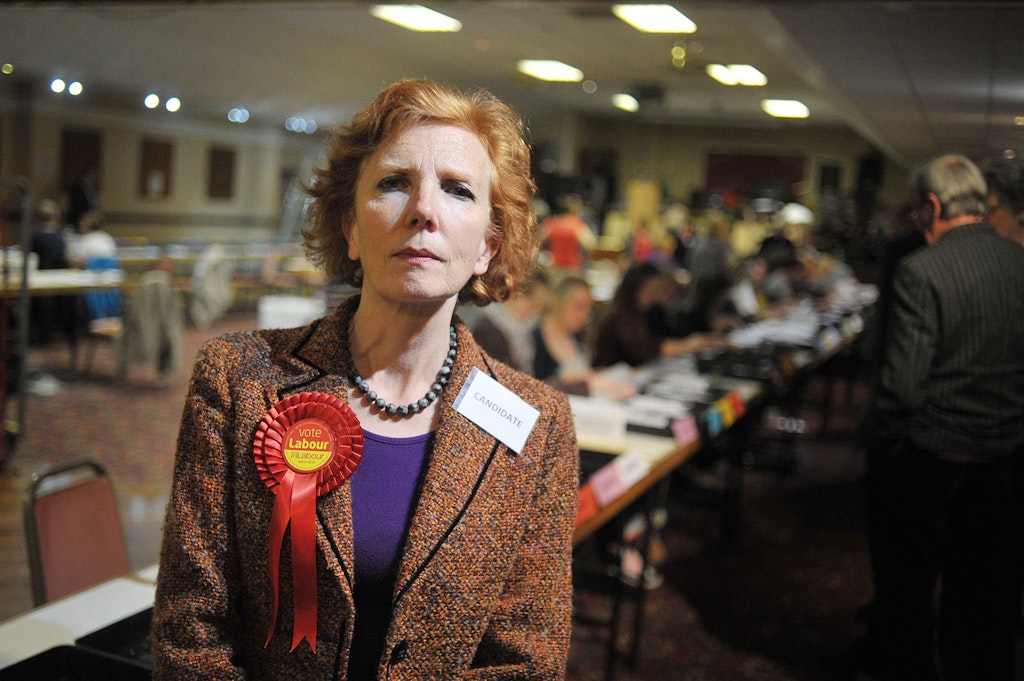Ireland’s Future has no future
Despite Irish separatist campaigning, Northern Ireland’s future remains firmly in the UK
One June 15th, the SSE arena in Belfast hosted a rally promoting a “united Ireland”, as the organisers would describe it. This event was supposed to give the impression that demands for a “border poll” on Northern Ireland’s future are growing. But it was patchily attended, and many seats were filled by school children and university students, who were given free tickets by the organisers, Ireland’s Future.
This group claims to welcome “people from all political persuasions” and its events are choreographed to make it appear that people from unionist backgrounds are taking part in a “conversation” about “a new constitutional vision for (the) island”. In fact, its board is dominated by Sinn Fein activists and people who have been close to the party’s campaigns.
That means that, although Ireland’s Future tries to give the century old campaign to destroy Northern Ireland an air of freshness, many of its proponents supported previous attempts to force the province out of the UK through violence. The worst elements of the old Ireland seem most determined to shape the “new Ireland”, as they now like to describe a 32-county separatist republic.
Meanwhile, many of the tiny group of so-called unionists who have become involved simply seem to be revelling in the attention it affords them. On Saturday, the contributors to a “Protestant Perspectives” panel included Wallace Thompson, a DUP founder member and arch-Paisleyite, who previously described the Pope as the “antichrist”. Long-sidelined within mainstream unionist politics, he now says Northern Ireland’s destruction is “inevitable”.
His fellow panellist David Adams was briefly in the public eye during the 1990s, when the government was desperate to involve loyalists in the “political process”, despite their lack of electoral support. Mr Adams is a former paramilitary, who became a local councillor for the UDP, a tiny party linked to the UDA terrorist group.
Neither of these men has expressed outright support for Northern Ireland’s annexation by the Republic, but they say they are prepared to discuss that possibility and what might follow. In Northern Ireland’s media, marginal unionists can guarantee airtime by being open to Irish separatist doctrines.
For that reason, Thompson, previously regarded as something of a reactionary dinosaur, now appears regularly on BBC Northern Ireland programmes and was interviewed at length by the Belfast Telegraph.
Other, even more obscure, social media figures and “activists” find brief notoriety by joining in with the campaigners’ “conversation”.
Previously, Ireland’s Future scheduled Andrew Clarke, a self-described “cultural unionist”, to speak at one of its events. It later withdrew that invitation, after newspapers discovered that he had described DUP voters as “c**ts”, referred to the Orange Order as a “putrid shower of dangers” (sic) and advocated that the Royal Family be “thrown in the sea”.
On Saturday, the Protestant panel discussion was chaired by the Reverend Karen Sethuraman, who is frequently described as a “Baptist pastor”. In reality, she is involved in a tiny sect called the Anabaptist Mennonite Network and is described as having “stepped outside the traditional confines of the church”. The SoulSpace “Celtic Community” that she runs in Belfast is apparently focussed on “racial injustice” and “gender injustice”. And she contributes a column to the fiercely republican Andersonstown News, owned by Belfast Media Group Ltd, whose director is the veteran Sinn Fein politician Mairtin O Muilleoir.
Opinion polls show that support for maintaining the United Kingdom remains at stubbornly consistent levels
Irish separatists like to portray unionism as a culture or tradition within the Irish nation, rather than a genuine political allegiance to the United Kingdom. The tiny set of “unionists” who indulge their campaign often argue that their “community” might have a louder voice in an all-Ireland parliament.
It’s not at all clear what they would use this voice to say, in a state founded on anti-Britishness. Presumably, it would amount to “give us more money” and “fund our pet projects lavishly”.
In the real world, the vast majority of people in Northern Ireland have no interest in Ireland’s Future or similar organisations. Opinion polls show that support for maintaining the United Kingdom remains at stubbornly consistent levels and has stayed that way for years.
In addition, nearly every unionist sees events like the Ireland’s Future meeting for what they are — exercises in portraying a partisan and deeply divisive campaign as a debate or conversation about the future. The DUP deputy first minister, Emma Little-Pengelly, recently dismissed the idea that she should participate with a terse, “Absolutely not.”
On Saturday, even Naomi Long, the Alliance Party leader who is trying to win the Westminster seat in East Belfast, thought better of attending, despite previously accepting an invitation. She claimed that, on this occasion, she was too busy campaigning. But cynics pointed out that, in a predominantly unionist seat, she needed the support of moderate pro-Union voters to challenge Gavin Robinson, the DUP incumbent. Ultimately, she wasn’t prepared to alienate them by appearing at a glorified nationalist rally.
Since Brexit, various Irish separatist campaigns have spawned, the noisiest of which has been Ireland’s Future. They’ve been successful, to a degree, in giving the impression of momentum, thanks to a pliant media in Ulster. The BBC is particularly keen to fill air-time with this confected constitutional “debate”.
In truth, it is the same old people issuing the same demands and threats that they’ve been retreading for at least forty years. Adding a handful of extra strays, cranks and luvvies cannot disguise that fact.
Enjoying The Critic online? It's even better in print
Try five issues of Britain’s most civilised magazine for £10
Subscribe














